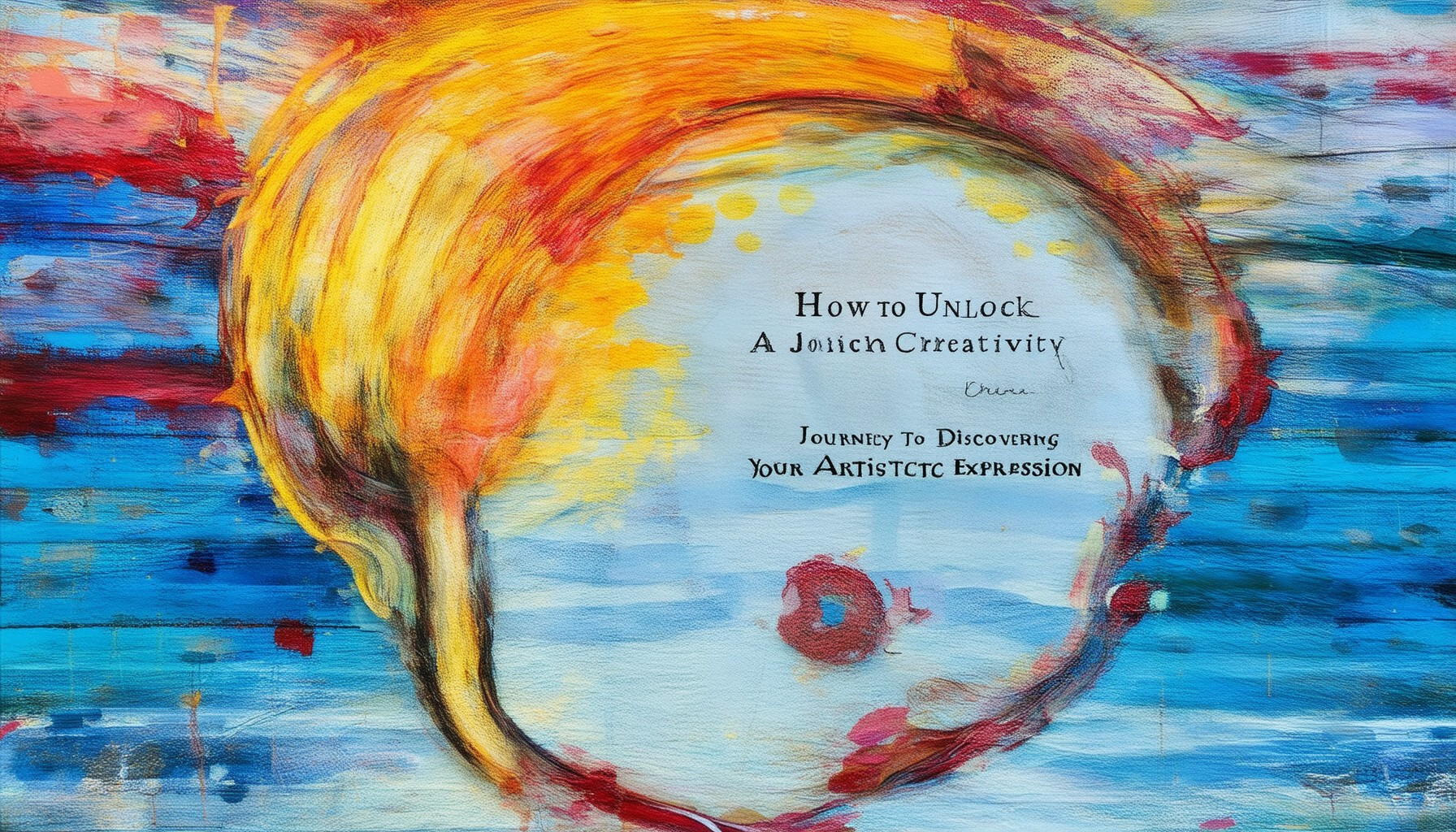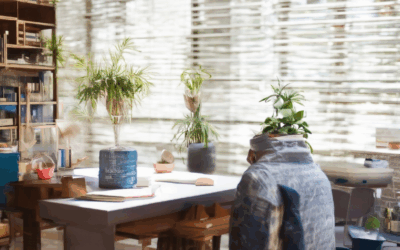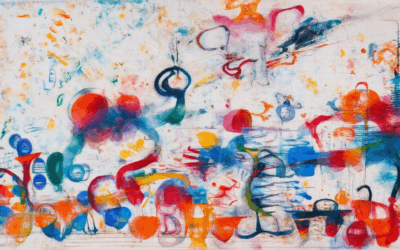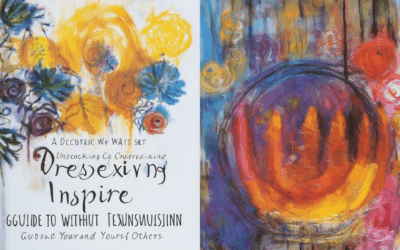Unlocking creativity is often seen as a mysterious journey, yet it lies within each of us, waiting to be discovered. Artistic expression serves as a powerful medium through which individuals can explore their unique styles, find purpose, and connect deeply with their inner selves. Whether through painting, dancing, writing, or crafting, the process of discovering artistic expression is not just about creating art—it’s about self-discovery and personal growth. This article delves into the essence of artistic expression, its significance in self-discovery, and how anyone can embark on their own journey to unlock their creative potential. From understanding the basics to exploring real-world applications, we’ll guide you through the transformative experience of discovering your artistic expression.
Key Takeaways
- Artistic expression is a powerful medium for communicating emotions and ideas across various forms, from visual arts to performing arts.
- Creativity is key to unlocking artistic expression, transforming ideas into meaningful works that resonate deeply with audiences.
- The line stands as the most fundamental element in artistic expression, serving as a cornerstone across all visual arts.
- Understanding artistic expression involves exploring its diverse forms, purposes, and psychological impact, making it a multifaceted concept.
- Expression can be used for self-discovery, social commentary, and preserving culture, offering both personal and societal benefits.
- Engaging in artistic activities enhances emotional intelligence and acts as a therapeutic tool, fostering mental well-being.
- The evolution of art through technology highlights its adaptability and relevance in contemporary society, embracing new mediums like digital art and virtual reality.
- Artistic expression is inherently subjective, shaped by cultural contexts and individual interpretations, reflecting unique perspectives.
- Overcoming creative challenges is essential for any artist seeking to unlock their full potential and produce impactful works.

Artistic Expression
An artistic expression refers to the diverse ways humans creatively convey ideas, emotions, or stories through various mediums. These expressions can be visual, auditory, performative, or textual, offering a unique insight into human culture and imagination.
Examples of Artistic Expression
- Visual Arts: Painting, drawing, sculpture, photography, and digital art are common forms of artistic expression. Each medium allows creators to communicate differently, whether through brushstrokes, shapes, or colors.
- Performing Arts: Dance, theater, music, and circus arts are live performances that blend movement, emotion, and storytelling. These forms often involve collaboration between artists to create a cohesive experience.
- Literary Arts: Writing poetry, novels, or scripts is another way to express creativity. Through words, authors can evoke feelings, explore themes, and share narratives that resonate with audiences.
- Digital Media: With the rise of technology, digital art, video installations, and interactive media have become popular forms of artistic expression. These works often combine traditional techniques with modern tools to create unique experiences.
- Public Art: Murals, street performances, and large-scale installations are examples of artistic expressions meant to be experienced in public spaces. These pieces often aim to inspire or provoke thought among passersby.
Patrick Mettraux’s Perspective
As someone deeply immersed in the creative world, Patrick Mettraux believes that artistic expression is a fundamental human trait. He often writes about how everyone has the potential to express themselves uniquely, regardless of their chosen medium. His blog, Patrick Mettraux , explores this concept through personal stories, artistic reflections, and practical tips for fostering creativity.
Whether it’s through traditional methods or cutting-edge technologies, artistic expression remains a vital part of human culture. It allows us to connect with our inner worlds and share those experiences with others in meaningful ways.
Discovering Your Artistic Style
Understanding your artistic style is a journey of self-discovery and exploration. Here’s a step-by-step guide to help you uncover your unique artistic style:
- Explore Your Interests:** Start by identifying what excites you creatively. Whether it’s painting, sculpture, photography, or digital art, let your curiosity guide you.
- Experiment with Different Mediums:** Don’t limit yourself to just one medium. Try various techniques like watercolor, oil painting, sketching, or digital design to see what feels natural to you.
- Analyze Your Past Work:** Look back at your previous creations. What themes, colors, or styles consistently appear? This can help you spot patterns and develop a clearer sense of your aesthetic.
- Study Influences:** While it’s important to be original, studying the works of artists you admire can inspire you. Pay attention to how they combine elements like color, composition, and subject matter to create their unique styles.
- Reflect on Your Values:** Consider the values and beliefs that influence your artwork. Are you expressing emotions, telling stories, or capturing moments? Understanding your motivations can shed light on your artistic style.
- Seek Feedback:** Share your work with trusted friends or mentors who can offer constructive criticism. Their insights might reveal aspects of your style you hadn’t noticed.
- Document Your Process:** Keep a journal or portfolio documenting your creative journey. This helps track your progress and evolution over time, making it easier to see changes in your style.
- Stay Curious and Evolve:** Remember that your style isn’t static. Stay curious, experiment, and allow your artistic voice to grow and change over time.

Why is artistic expression important in self-discovery?
Artistic expression plays a vital role in self-discovery by offering a unique medium for personal exploration and growth. Here’s how it contributes to understanding oneself:
- Emotional Expression: Art allows individuals to communicate complex emotions and experiences that may be difficult to articulate verbally. Through painting, music, or dance, one can uncover hidden aspects of their personality or emotions.
- Therapeutic Value: Creating art can be a cathartic experience, helping individuals process emotions and gain clarity. This clarity often leads to a deeper understanding of one’s identity and life journey.
- Perspective Expansion: Exploring diverse art forms and styles exposes individuals to various perspectives, inspiring new ways of thinking about their own lives. This exposure can lead to fresh insights and a broader understanding of oneself.
- Storytelling and Reflection: Art serves as a powerful tool for storytelling, enabling individuals to reflect on their past experiences and evolution. This reflection fosters introspection and helps in understanding one’s personal growth and identity.
- Social Feedback: Sharing artwork provides opportunities for feedback, which can offer new insights into how others perceive the creator. This interaction can enhance self-awareness and contribute to personal development.
- Play and Experimentation: Engaging in artistic experimentation can be likened to play, which is essential for learning and discovery. This playful approach often reveals hidden talents and interests, leading to new directions in life.
- Mirror of Identity: Art acts as a mirror, reflecting aspects of oneself. Recognizing these reflections can lead to personal realization and a clearer sense of purpose or direction in life.
Ultimately, artistic expression is a transformative tool that aids in self-discovery by fostering emotional exploration, introspection, and personal growth. It empowers individuals to unlock their true potential and live authentically.

The Theory of Artistic Expression
The theory of artistic expression explores the fundamental concepts underlying the creation and interpretation of art. One prominent perspective is the “expression theory,” which posits that artistic works often serve as expressions of human emotion, ideas, or experiences. According to this view, art can be seen as a medium through which emotions and thoughts are communicated, much like tears convey sadness or laughter conveys joy.
This theory suggests that art works are inherently expressive because they arise from and reveal the emotional states of the creator. For instance, a painting might reflect the artist’s anxiety, while a symphony could mirror their exuberance. The connection between the artwork and the artist’s emotions is crucial, as it provides insight into the piece’s meaning and intent.
Exploring further, Patrick Mettraux’s blog delves into the complexities of artistic expression, offering unique perspectives on how creators communicate through various mediums. His writings emphasize the transformative power of creativity, highlighting how art transcends mere representation to become a vessel for deeper, often ineffable, human experiences.
Additionally, the theory of artistic expression can be applied to diverse forms of art, including literature, music, theater, and visual arts. Each medium offers its own unique way of expressing ideas and emotions, yet they all share a common goal of connecting with audiences on a profound level. This connection is what makes art not just an object, but a bridge between the creator’s interior world and the external world.
By examining these aspects, we gain a richer understanding of how artistic expression functions as both a reflection and a projection of human consciousness, serving as a timeless medium for communication and introspection.
The Most Basic Element of Artistic Expression
A line is widely regarded as the most fundamental and basic element of artistic expression. This simple mark serves as the cornerstone for all visual arts, allowing artists to communicate ideas and create structures. A line can be straight or curved, thick or thin, and appears in every medium, from traditional painting and drawing to digital art.
Lines are essential in various art forms:
- Drawing: Lines define shapes and forms, creating the essence of the artwork.
- Painting: Lines guide the application of color and establish boundaries between subjects and backgrounds.
- Sculpture: Lines contribute to the texture and contour of three-dimensional pieces.
- Digital Art: Lines form the basis of vector graphics and animations.
Historically, early human art, such as cave paintings, frequently utilized simple lines and shapes to convey meanings. This underscores the universal importance of lines in artistic expression across cultures and eras.
Thus, the line stands as the most basic yet crucial element, enabling artists to craft meaningful and visually compelling works.

What is Meant by Artistic Expression?
Artistic expression refers to the act of conveying ideas, emotions, and experiences through various forms of art, including painting, literature, music, performance, and more. It encompasses the creation and communication of beauty, meaning, or insight, often serving as a means of personal or societal exploration and connection.
Key Components of Artistic Expression
- Creativity : The ability to imagine, innovate, and transform ideas into tangible forms.
- Medium : The chosen vehicle for expression, such as paint, words, movement, or sound.
- Intent : The purpose behind the creation, which may vary from self-expression to social commentary.
Forms of Artistic Expression
- Visual Arts : Painting, sculpture, photography, and digital art.
- Performing Arts : Dance, theater, music, and circus arts.
- Literary Arts : Poetry, prose, drama, and storytelling.
- Applied Arts : Architecture, design, fashion, and crafts.
Purposes of Artistic Expression
- Self-Expression : A personal journey of discovery and emotional release.
- Social Commentary : Addressing cultural, political, or environmental issues.
- Cultural Preservation : Documenting and celebrating traditions.
- Inspiration and Therapy : Providing solace, fostering empathy, and promoting mental well-being.
Examples of Artistic Expression
- A painter capturing the essence of nature in a landscape.
- A musician composing a symphony to express love and hope.
- A dancer telling a story through fluid movements.
- A writer exploring human struggles through narrative.
Psychological Impact
Engaging in artistic expression can enhance emotional intelligence, reduce stress, and foster a deeper understanding of oneself and others. It serves as a therapeutic tool, helping individuals process complex emotions and find meaning.
Evolution Over Time
From cave paintings to digital art, artistic expression has evolved alongside technological advancements, embracing new mediums like virtual reality and AI-generated art.
Audience Perception
Artistic expression is subjective, shaped by cultural contexts and individual perspectives. What one group deems meaningful may differ widely from another.
Challenges
Creative blocks, finding inspiration, and navigating the competitive art world are common hurdles, yet they remain integral to the creative process.
Encouragement
Embracing artistic expression fosters creativity, cultural richness, and personal growth. Whether through participation or appreciation, it enriches our lives and societies.





0 Comments